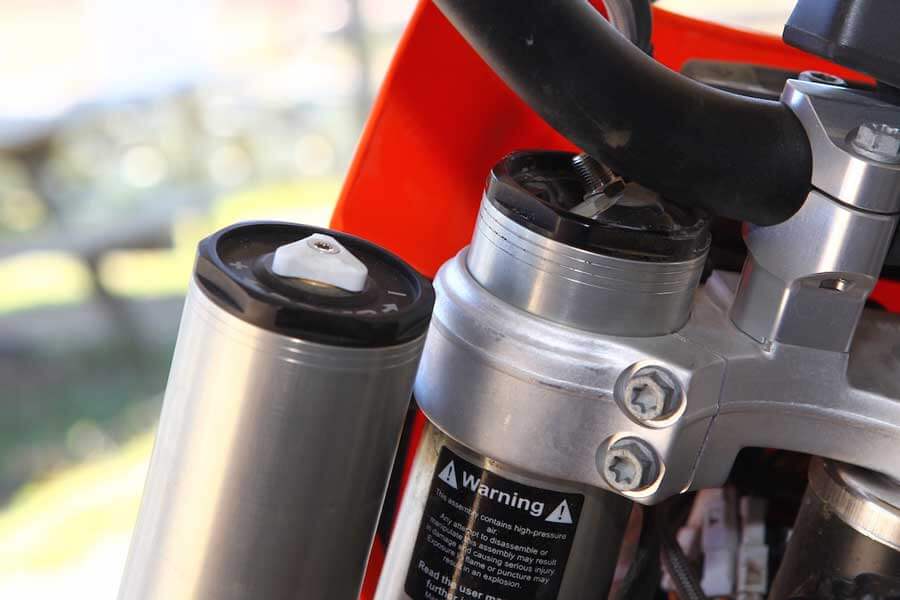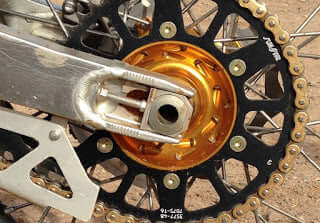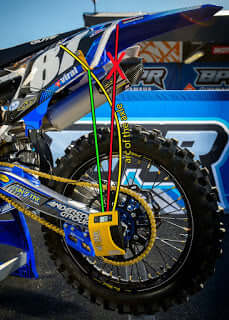I know a lot of people tend to bring their fork tubes up in the triple tree clamps to try to get the bike to turn better. While this makes sense in the fact that it will steepen the rake on the front end it is actually one of the worst things you can do to the bikes geometry. I always leave the fork tubes in the stock position or where my suspension tuner recommends. If I need the bike to turn better I just run less sag in the rear giving the front end more rake and the bike will turn better. The same is true for a fast track where you experience a lot of head shake. By running more sag in the rear, the rake of the fork is lessened and the bike is more stable at speed. It is always best to try to find the best setting for each different track or terrain you ride to get the best balance between steering and high speed stability. By changing the sag rather than the fork tube height, you are keeping the chassis geometry consistent with the manufacturers design so the bike performs as expected. This will result in a much more stable and predictable steed and increased confidence. The only time I would change the fork tube height would be to accommodate a lowering link that would throw off the chassis balance and need to be countered.



